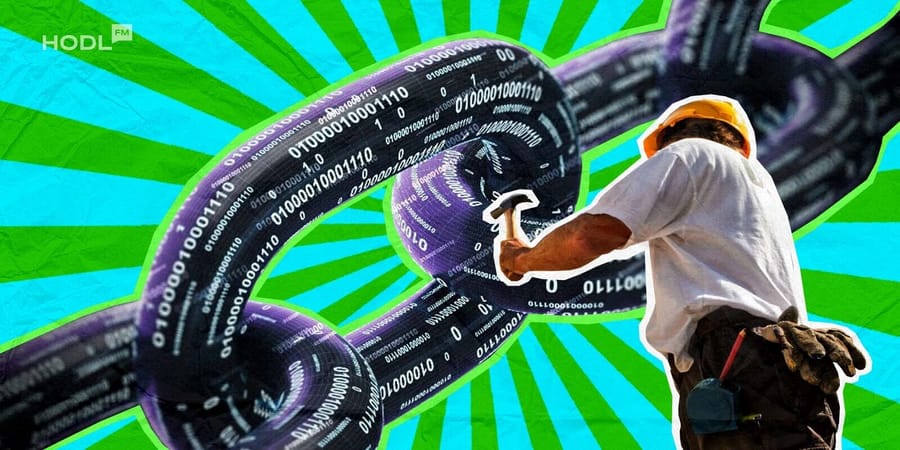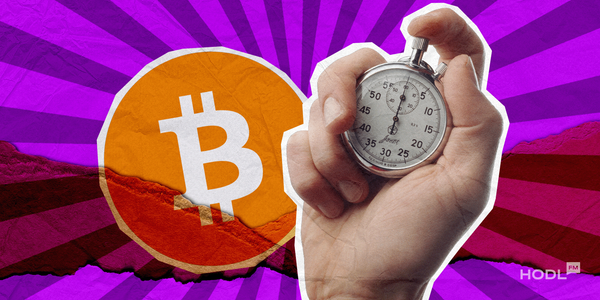One of the things that makes the crypto world seem too technical is the use of specialized language, and one of the specialized words in the “crypto language” is “crypto forks.” Everyone knows what forks are, but what is a crypto fork? And who gets to pick the names of these things?
While the answer to the second question remains unknown, we can tell you what a crypto fork is. Here is a disclaimer; it has nothing to do with a fork.
A crypto fork is basically like a software update for blockchains. Forks help networks improve and evolve through the new features they bring and the disputes they resolve. But it’s not just about upgrades. Sometimes, forks can result in the creation of entirely new chains, which can lead to the abandonment of the old chain or both independent chains running simultaneously. If you need blockchain forks explained, you’ve come to the right place because everything you need to know is in this Crypto fork guide.
Why Crypto Forks Happen
A crypto fork can happen for several reasons. The usual reasons are things such as;
- The need to add functionality through protocol upgrades
- The need to address security risks and vulnerabilities
- The need to resolve a dispute within the community on the future of the cryptocurrency
Regardless of the reason a fork is needed, forks ultimately allow the evolution of a network, and who doesn’t love evolution?
Types Of Forks
As you may have already guessed, there are many crypto fork types. There are two major types of forks (and no, it’s not fork and spork), but there’s one type that’s kind of (or literally) accidental.
Hard Forks
There’s no better way to put it: hard forks are the hardcore versions of forks. They involve significant, non-backwards-compatible changes that result in a completely new and different blockchain.
Hard forks, being hardcore, change many fundamental things about the parent blockchain, like its consensus mechanism, block structure, and even transaction verification rules. Pretty hardcore, right?
Soft Forks
Soft forks are the softer, less hardcore versions of a fork. They involve less significant, definitely backwards-compatible changes in a blockchain.
They usually just involve actions such as upgrading the features on the existing blockchain, adding new types of transactions, and tightening existing rules. Whatever they do, soft forks do not split the blockchain. The network stays intact and even if some nodes aren’t upgraded, they still recognize transactions and blocks created under the new rules as valid.
Accidental/Temporary Forks
Accidental blockchain forks don’t get as much spotlight as the other two because those other two are what we call “intentional forks”, and accidental forks are just, well, accidental.
These types of forks occur when two or more miners discover or generate a new block at about the same time. They are also called temporary forks because they cause a temporary split in the blockchain.
Accidental forks eventually get resolved when one of the blockchains is abandoned or “orphaned” by the network.
Hard Fork vs Soft Fork: How Do Crypto Forks Work?
How Do Hard Forks Work?
It has already been established that hard forks cause a split in the blockchain. After that, any node on the blockchain that continues running the old software will become incompatible with the nodes on the new, upgraded chain.
This separation then leads to a new blockchain, with a new transaction history, cryptocurrency, and everything else, while the old chain stays on its own as a separate network. The most common reasons for hard forks are irreconcilable disputes between the community’s decision-makers or when there’s a need for major protocol changes that cannot coexist with the original blockchain.
How Do Soft Forks Work?
Soft forks also introduce changes to the blockchain, but they are not as drastic as their hard counterparts. They work when both old and new nodes accept the changes introduced.
While there are many soft fork benefits, they also require a majority of miners or validators to adopt all the new rules to be successfully implemented. If the new rules do not get enough support, they cannot be enforced and will eventually fail.
Examples of Hard and Soft Forks
Over the years, we’ve seen many projects implement different types of forks, but some examples stand out more than others. So here are some famous soft fork and hard fork examples.
- Bitcoin Cash (BCH)
There used to be just one Bitcoin until 2017 when the Bitcoin Cash hard fork was introduced to solve Bitcoin’s scaling issue. The introduction of BCH increased the block size from 1MB to 8MB, which allowed more transactions per block, reduced congestion, and lowered transaction fees.
A Map of Bitcoin Forks
by in Bitcoin
- Ethereum Classic (ETC)
The ETC saga is perhaps the biggest Ethereum hard fork in the network’s history. The Ethereum Classic hard fork was created in the aftermath of the DAO hack, which affected a lot of Ethereum users. The hard fork was necessary because some nodes still opted to stay on the original chain.
- Segregated Witness (SegWit)
One of the most famous forks in Bitcoin forks history was the Segregated Witness. The SegWit was a soft fork implemented on the Bitcoin network in 2017. It was a simple fork that optimized block capacity by separating transaction signatures from transaction data.
- Taproot Upgrade
Taproot was another Bitcoin soft fork that was implemented to expand Bitcoin’s functionality with the introduction of Schnorr signatures and privacy features.
6 years ago, we had the first Bitcoin fork where BTC forked to BCH. Now 6 years later, BCH is down 95% against BTC. An integral part of Crypto history nonetheless.
by u/partymsl in CryptoCurrency
What Are The Impacts of Forks?
As they say, “actions have consequences,” and when a network gets forked, it has a great impact not just on the blockchain itself but also on other factors such as users, developers, and even the market in general. But how exactly do cryptocurrency forks impact these factors?
Users
Both hard forks and soft forks have a significant impact on the users.
Regarding hard forks, new coins are usually created, providing users with new assets and new opportunities for investment in the newly forked chain. In the end, it’s up to the users to decide whether they support the new chain or the original one or even sell either of the coins.
The backwards-compatible soft forks bring upgrades and new features to the blockchain, which are usually good for users—except when they’re not.
Developers
For developers, forks are a new opportunity to show creativity by introducing new features, fixing bugs, or modifying certain network parameters. Soft forks allow developers to implement moderate, incremental changes that don’t disturb the network’s functioning.
Hard forks are especially exciting because they offer the chance to create something entirely new. They can do everything, from transitioning to a different consensus mechanism to rewriting entire protocol sections.
Markets
Crypto forks and market volatility go hand in hand. For the market, hard forks usually mean the price volatility of the coins on both blockchains increases as traders begin to speculate on the price performance of both.
Soft forks can also affect market confidence in the project. If most users like the upgrades, the price performance of the coin may be boosted. However, if the reverse is the case, it could mean a weak performance for the coin.
How to Prepare for a Crypto Fork
As a blockchain user, you need to know that forks may come at any time. But what do you need to do in preparing for a crypto fork?
- Keep Up With Information
You should follow updates released by the project teams working on your blockchain so you can stay informed about any relevant information involving forks, how it affects you, and what you need to do.
- Ensure Your Wallet Compatibility
In the case of a split chain, you need to ensure that your crypto wallet is compatible with both the original and forked chains and the forked cryptocurrencies.
- Stay Safe
Forks are significant events in the life of any chain, and as such, bad actors will try to exploit them. You need to be extra careful and use only trusted wallets and exchange platforms. You may even temporarily withdraw your funds from the exchanges you use just in case they end up not supporting either chain.

Disclaimer: All materials on this site are for informational purposes only. None of the material should be interpreted as investment advice. Please note that despite the nature of much of the material created and hosted on this website, HODL FM is not a financial reference resource and the opinions of authors and other contributors are their own and should not be taken as financial advice. If you require advice of this sort, HODL FM strongly recommends contacting a qualified industry professional.




